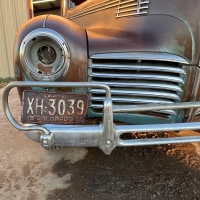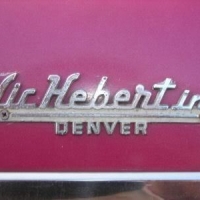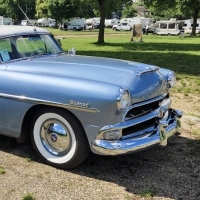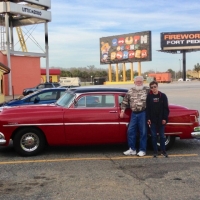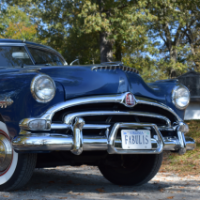Oil filters on Stepdowns

50SuperFalcon
Member
in HUDSON
I’m aware of all of the controversy over these on the step down models . I would like some factual evidence if anyone can convey any .
1 do they work ?
2 steel copper or rubber hoses?
1 do they work ?
2 steel copper or rubber hoses?
3 what pressure is put out through those lines?
Thanks
Blake
Thanks
Blake
0
Comments
-
They work, but not nearly as well as modern filtration setups. The evidence is what is trapped in the filter which I see every time I replace the filter cartridge during an oil change. It is a "bypass" oil filter so not all of the oil is filtered through it as the oil cycles through the engine. It is a significant failing and why some have engineered other approaches.Rubber/hydraulic hoses. I recommend getting 2 OMIX-ADA 17470.10 lines.I am not sure what the pressure experienced by the lines is, but they handle it well.
0 -
@cchancel thanks a ton, that’s what I’ve been thinking of ;is that any filter is better than none. Even if it is a partial flow system . (Happy All Hallows’ eve)
-Blake0 -
Beware that there needs to be a restriction in the line coming out of the block, I don’t know what the size of that is, to maintain oil pressure in the engine. I learned the hard way after a full and expensive rebuild. Thank fully I only lost one bearing.0
-
0
-
Me too. I need to look at some of my engines to see if I can see what it is0
-
I cleaned up an original Hudson version for use on mine. It had a curious 45 degree brass elbow at the canister on the input side. When I dismantled it to clean it I noticed the 45 had a built in restriction. The oriface was clearly smaller than the rest of the fittings and hoses. I assumed it was there to keep from over-flowing to the canister and causing it to leak. I hadn't thought about parasitic flow that might starve the rest of the engine.0
-
The question is valid.... the experience of many is also valid. The use of a Hudson or other canister oil filter is quite a bit of trouble for almost ZERO positive and the possibility catastrophic failure of your engine. Hudson DID NOT offer a add on oil filter. A supplier FRAM did offer a kit that was sold through Hudson dealers to place on the BIG SIX and other engines. This was called UP SELLING A CUSTOMER and well explained in the Hudson Service magazines. When these strap on items are used there is a big opportunity for oil line or connection failure as well as the blocking from the filter. My limited experience was use of a FRAM filter with new flex lines and a WIX filter element. The three times I changed oil during its use, I cut the filters apart to determine if there was evidence of contamination. Granted I did not use high quality oil filter evaluation equipment or analysis of the drain oil... but in ALL cases the filters were as clean as a test filter I placed in the chamber overnight and cut in half as a test example. The thing added the mystic of - does it filter the oil while creating a failure point not needed. Fortunately when one of the lines on my engine began to leak the dash "red light" alerted me. I pulled over and got home on a rollback. A check of the dipstick showed 2 quarts had escaped the crankcase. I pulled the lines and put the plugs back into the block. Then pulled MR WIX for the last time. Same result when I cut the filter... lots of oil but NO color change or contamination. My unscientific result are: I have a filter still bolted on the original car... but NO connections. A Spot of Orange under the hood. Would I put another one of those on my Hudson....NO-NO and Heck NO!0
-
What is the size of the plugs and of what material for those of us who perhaps want to disable our by-pass filter canister?0
-
Railknight the plugs were the originals I kept and returned to the block. I will look tomorrow to see if I have a set to take specs from...0
-
plugs are 1/8" NPT0
-
Thanks for the information, Geoff. I purchased two 1/8" brass plugs today. Here's an informative story by Military Vehicle/Trader on full flow and by-pass oil filters and how to service a by-pass filter during an oil change: Servicing Your HMV Oil Filter - Military Trader/Vehicles0
-
I put a 1/16 restrictor orifice in my set up. I made it using a spent .22 case.
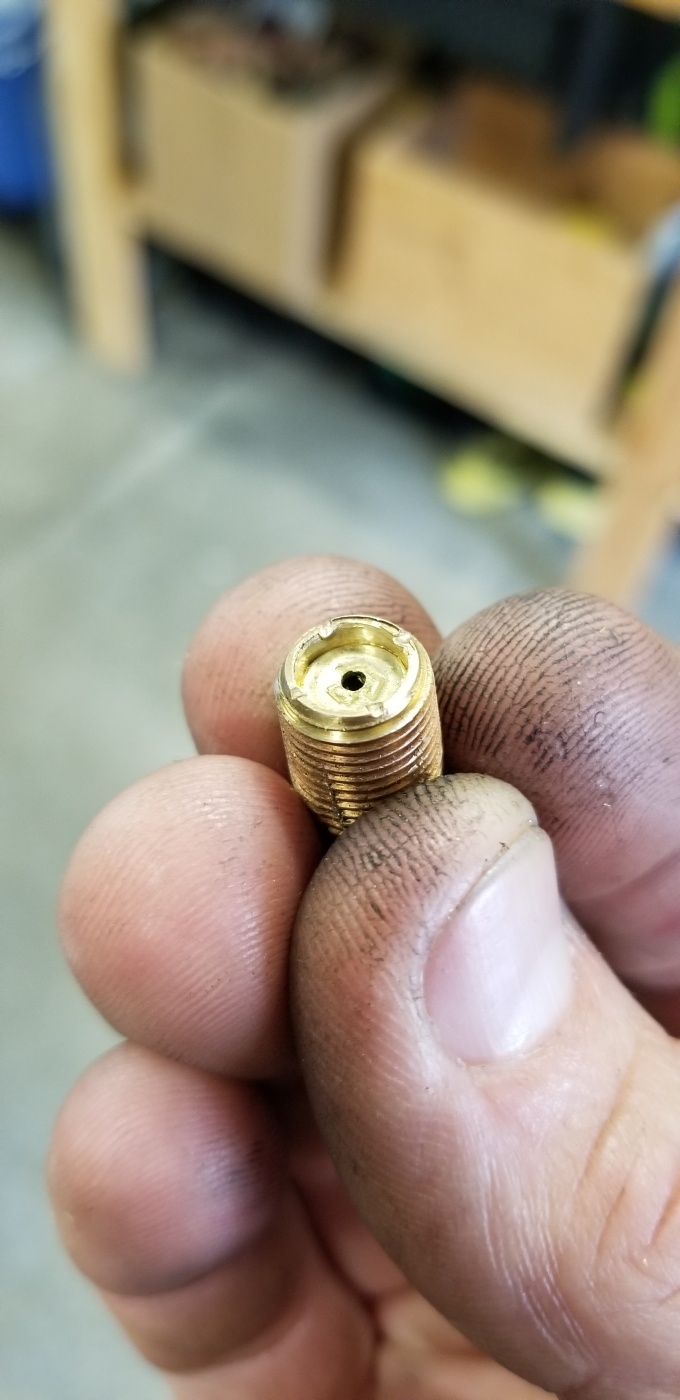 0
0 -
Wow that is tiny! What is that about 1/16" hole?0
-
Sorry did not see the previous post that this was 1/16" however this really begs the question if the bypass filter is really doing much of anything?0
-
@50C8DAN I’m starting to wonder the same thing. Is it worth it with such little oil going through the system . Most of the guys in my club say it’s a waste of time and money . They just change the oil every 1500-2000.0
-
Ford Flatheads used a 1/16 orifice so that's what I went with. I assume the bigger it is the less oil #5 main bearing on a 308 gets. The literature I saw estimates that the entire 5.5 quart capacity on a Ford flatty gets filtered 30 minutes at highway speeds.0
-
@WABOOM thank you for the insight . Even with all this scince and thought m still not sure weather or not to hook mine up . If not I just change the oil more often0
-
I was wrong.. it's 5 minutes not 30 minutes. And apparently some guys use a .040 restrictor orifice.0
-
In my stash of parts I have a 3/4” or so block that fits where the cover plate is on the oil pump. It has a 1/2” NPT threaded hole to plumb an oil line to a remote spin on filter that takes a PH8A filter. This was run on a full house Clifford built engine back in the 70s. I’ll see if I can find it and post a pic this weekend.0
-
I would love to see a pic of
that. I want to make one.0 -
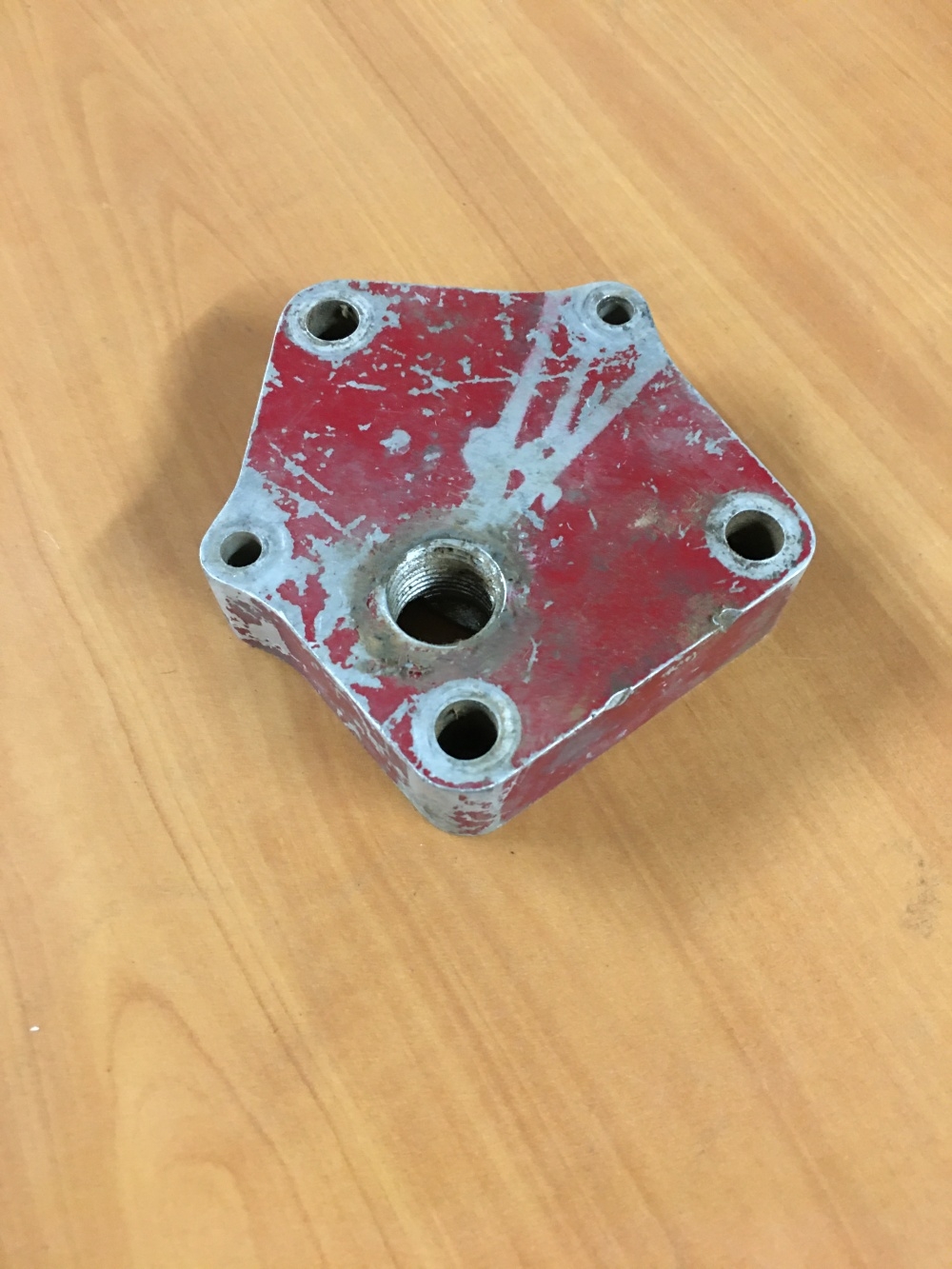
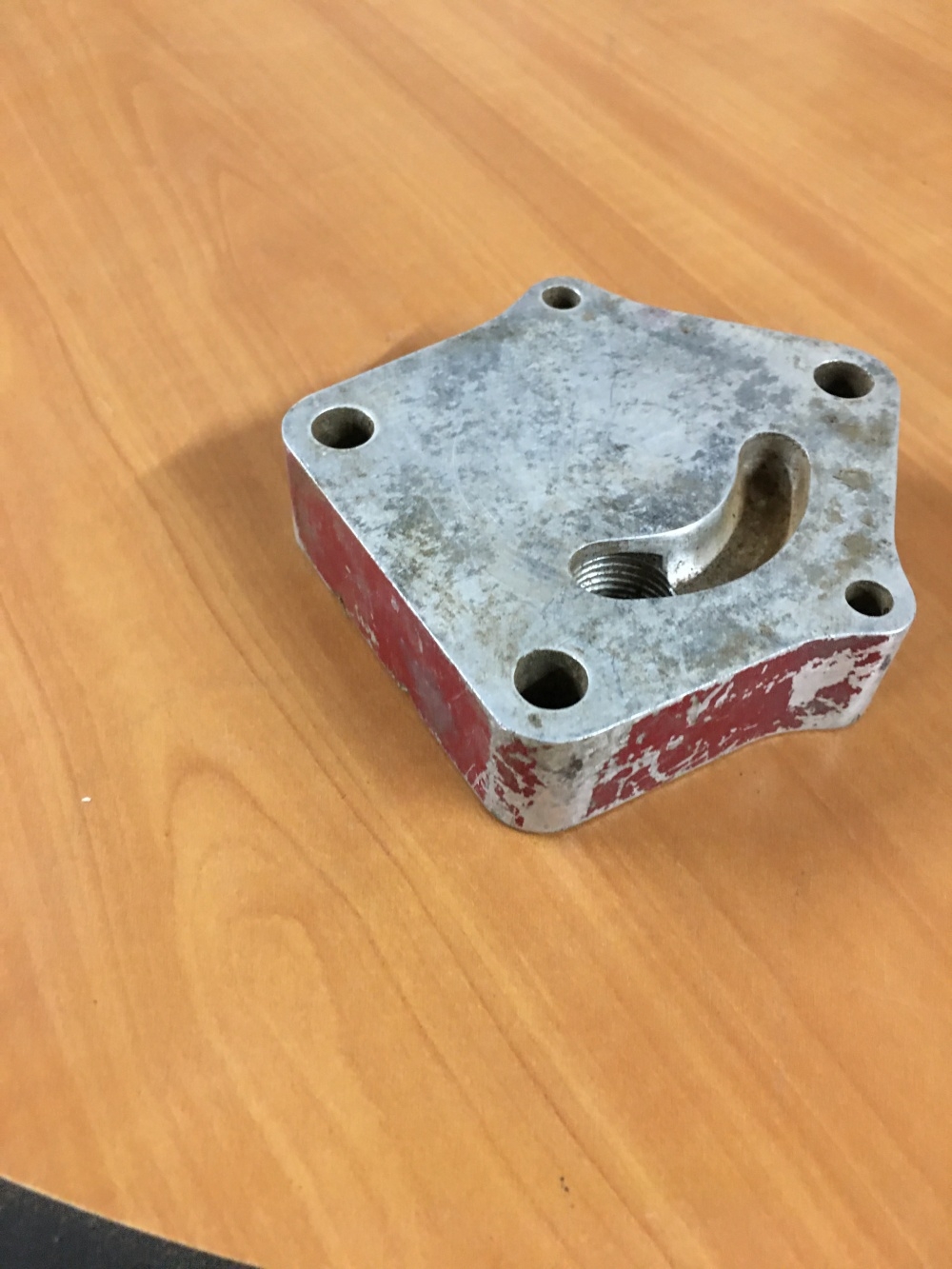 This is that oil pump plate, 1” thick with a 1/2” NPT hole in it. I think the return line went to a fitting welded to the oil pan.
This is that oil pump plate, 1” thick with a 1/2” NPT hole in it. I think the return line went to a fitting welded to the oil pan.
0 -
53NamedGeorge said:I’m aware of all of the controversy over these on the step down models . I would like some factual evidence if anyone can convey any .
1 do they work ?
2 steel copper or rubber hoses?3 what pressure is put out through those lines?
Thanks
Blake1. Mine works great, definitely captures material, and has never exploded. I drive my Hudson a lot of miles, so I look very closely at what other drivers do, like Walt for example. He always said he uses a filter to extend periods between oil changes. It's no fun if you're supposed to do a ~1000 mile change on a ~3000 mile trip. No, it has never exploded and left me stranded. Modern detergents and superior oil composition can take that period even further, they've come a long way.2. They were originally steel on mine I believe, but I've been using rubber for 10 years and thousands of miles without fail.0 -
@atc thank you for your reply!Do you have any sort of restriction like what has been discussed?I’ve been throwing the idea around just cause I drive it so much like yourself. 2-4000 yearly0
-
53NamedGeorge said:@atc thank you for your reply!Do you have any sort of restriction like what has been discussed?I’ve been throwing the idea around just cause I drive it so much like yourself. 2-4000 yearly
So sorry, I'll have to get back to you on that, I actually can't remember at the moment. I'll have to read through my notes.
0 -
53NamedGeorge said:@atc thank you for your reply!Do you have any sort of restriction like what has been discussed?I’ve been throwing the idea around just cause I drive it so much like yourself. 2-4000 yearlyI confirmed I have no additional orifice restriction on my bypass filter system. I think I have done enough reading to write up my thoughts on this. My reasons come mostly from the 1952 Mechanical Procedure Manual:Oil pressure is regulated by a built-in nonadjustable release valve and spring accessible through a plug at the left rear side of the engine. When starting the engine the release valve has moved to a position that closes the oil passageway to the oil filter and allows full pump flow direct through the main oil gallery extending the full length of the crankcase.I think over time it's possible for this release valve to wear out, and during restoration some folks may eliminate it. This release valve, when it's doing its job properly, should prevent engine oil starvation due to the filter. I do not see a good reason for arbitrarily increasing the pressure with an orifice restriction. The reason has got to do with oil pressure versus oil flow.No flow at all due to blockage results in the greatest level of pressure in a system. There are cases where a gallery or orifice blockage (a spun bearing perhaps) can cause oil starvation/low flow to a component when pressure is still good, and no oil dummy light gets lit. What's important is that oil flow is at all times adequate to lubricate the entire system. If the release valve in the block is functioning, it should allow for good flow despite the presence of a filter. Increasing pressure when flow is good may be a no-op.Oh, and the same book mentions:On cars equipped with oil filters the cartridge should be replaced at 5,000 mile intervals or when the oil shows evidence of becoming dirty.I'm not saying this is their recommended oil change interval (1000 miles, also in this book). But I do know there is some skepticism on the effectiveness of even modern filters and whether or not the original units were Hudson-endorsed or a sales gimmick. I just wanted to include this as a light indicator of Hudson's trust in a filtration system of any kind. Much of the information in this book may have or has definitely changed over time, but I still think it's a great technical resource.Whew, anyway, that's my full thought process. As always, the choice is yours!0
-
Thank you for all that!This brings up something that’s been happening to me a lot lately but the oil light will pop on and off on a whim .it started about a week ago . Any thoughts on that?0
-
53NamedGeorge said:Thank you for all that!This brings up something that’s been happening to me a lot lately but the oil light will pop on and off on a whim .it started about a week ago . Any thoughts on that?
It depends. Do you have a reading on a gauge when the light comes on? If there is a real pressure loss only at idle for example it could be a worn out oil pump rotor. If it's more random a sludgy pickup could mean slight and temporary oil starvation, lowering the reading. If the gauge always reads good pressure, the dummy light wire could be grounding on something as the car moves and bumps around. Could be worth posting a fresh question with more detail to get some more answers.
0 -
I am starting to wonder if the light is grounding out cause I hit some bumps on the way to work this morning and could have swarn it flickered . I’ll do some digging some time soon. The gauge I have was disconnected prior to me getting the car and it looked like it leaked anywho . It drives as it has so I think there is pressure .0
-
Check where the wire is clamped to the inner fender, this is a common point of shorting. But if the wiring is original it could be anywhere.0
Categories
- 36.9K All Categories
- 113 Hudson 1916 - 1929
- 20 Upcoming Events
- 92 Essex Super 6
- 28.6K HUDSON
- 574 "How To" - Skills, mechanical and other wise
- 995 Street Rods
- 151 American Motors
- 178 The Flathead Forum
- 49 Manuals, etc,.
- 78 Hudson 8
- 44 FORUM - Instructions and Tips on using the forum
- 2.8K CLASSIFIEDS
- 608 Vehicles
- 2.2K Parts & Pieces
- 77 Literature & Memorabilia
- Hudson 1916 - 1929 Yahoo Groups Archived Photos

